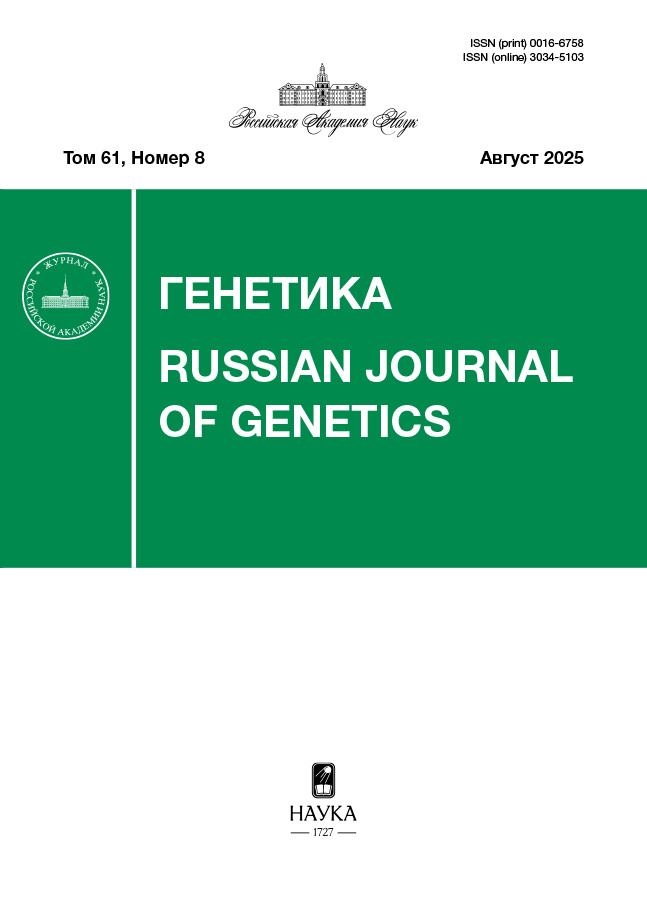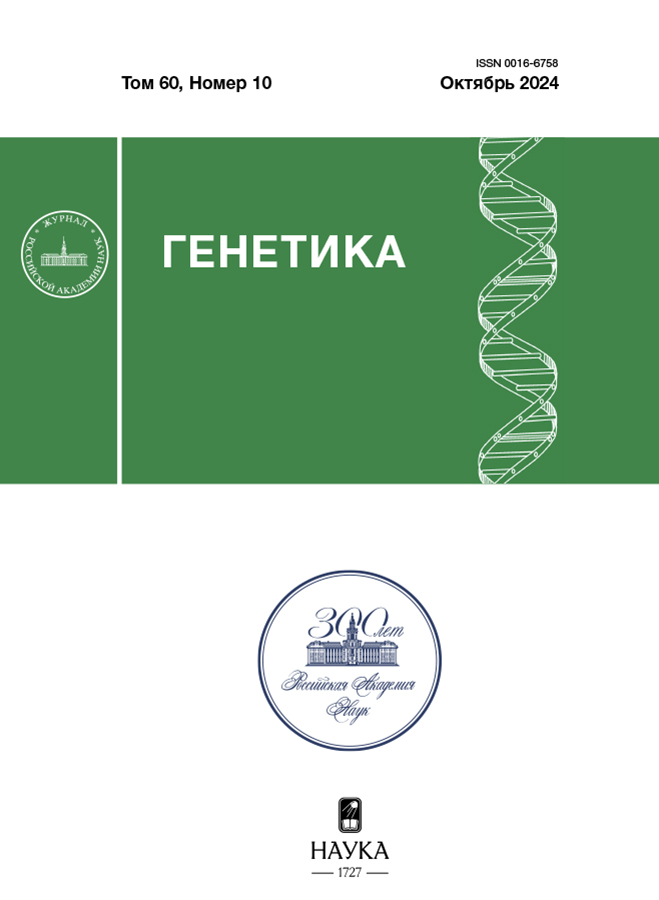Тетрациклиновая индукция природной лекарственной устойчивости к бедаквилину у Mycobacterium smegmatis mc2 155
- Авторы: Ватлин А.А.1,2, Цыбизов Д.А.1, Летвинова В.С.2, Даниленко В.Н.2
-
Учреждения:
- Российский университет дружбы народов им. Патриса Лумумбы
- Институт общей генетики им. Н.И. Вавилова Российской академии наук
- Выпуск: Том 60, № 10 (2024)
- Страницы: 111-116
- Раздел: КРАТКИЕ СООБЩЕНИЯ
- URL: https://rjonco.com/0016-6758/article/view/667187
- DOI: https://doi.org/10.31857/S0016675824100105
- EDN: https://elibrary.ru/wepzuf
- ID: 667187
Цитировать
Полный текст
Аннотация
Возникновение антибиотикорезистентности у микроорганизмов, включая микобактерии, представляет собой серьезную проблему в современной медицине, снижая эффективность лечения. В современном мире довольно широко обсуждается влияние на возникновение антибактериальной устойчивости минимальных селективных концентраций антибиотиков (МСК), которые значительно ниже классических минимальных ингибирующих концентраций (МИК). Предполагается, что такие микроконцентрации могут являться дополнительным механизмом отбора лекарственно устойчивых штаммов, что особенно актуально в связи с накоплением концентраций антибиотиков в окружающей среде в результате антропогенной деятельности. В контексте микобактерий понимание процессов индукции устойчивости к антибиотикам на уровне МСК является особенно важным для разработки эффективных стратегий лечения и контроля распространения лекарственной устойчивости. Цель данной работы – изучение индукции системы природной лекарственной устойчивости у микобактерий при воздействии на клетку концентрациями, значительно ниже стандартных МИК, не влияющими на рост клетки. Был проведен анализ устойчивости Mycobacterium smegmatis mc2 155 к одному из основных антибиотиков второго ряда, применяемых в медицинской практике, – бедаквилину, при индукции тетрациклином, офлоксацином и канамицином. Установлено, что одним из механизмов, влияющим на изменение чувствительности штамма M. Smegmatis mc2 155 при индукции микроконцентрациями тетрациклина, является система выброса антибиотика из клетки – MmpS5-Mmpl5.
Полный текст
Об авторах
А. А. Ватлин
Российский университет дружбы народов им. Патриса Лумумбы; Институт общей генетики им. Н.И. Вавилова Российской академии наук
Автор, ответственный за переписку.
Email: vatlin_alexey123@mail.ru
Россия, Москва, 117198; Москва, 119991
Д. А. Цыбизов
Российский университет дружбы народов им. Патриса Лумумбы
Email: vatlin_alexey123@mail.ru
Россия, Москва, 117198
В. С. Летвинова
Институт общей генетики им. Н.И. Вавилова Российской академии наук
Email: vatlin_alexey123@mail.ru
Россия, Москва, 119991
В. Н. Даниленко
Институт общей генетики им. Н.И. Вавилова Российской академии наук
Email: vatlin_alexey123@mail.ru
Россия, Москва, 119991
Список литературы
- Larsson D.G.J., Flach C.F. Antibiotic resistance in the environment: 5 // Nat. Rev. Microbiol. 2022. V. 20. № 5. P. 257–269. doi: 10.1038/s41579-021-00649-x
- Hjort K., Fermér E., Tang P.C., Andersson D.I. Antibiotic minimal selective concentrations and fitness costs during biofilm and planktonic growth // mBio. Am. Soc. for Microbiology, 2022. V. 13. № 3. doi: 10.1128/mbio.01447-22
- Stanton I.C., Murray A.K., Zhang L. et al. Evolution of antibiotic resistance at low antibiotic concentrations including selection below the minimal selective concentration: 1 // Commun. Biol. 2020. V. 3. № 1. P. 1–11. doi: 10.1038/s42003-020-01176-w
- Swinkels A.F., Fischer E.A.J., Korving L. et al. Defining minimal selective concentrations of amoxicillin, doxycycline and enrofloxacin in broiler-derived cecal fermentations by phenotype, microbiome and resistome // bioRxiv, 2023. doi: 10.1101/2023.11.21.568155
- Gullberg E., Cao S., Berg O.G. et al. Selection of resistant bacteria at very low antibiotic concentrations // PLoS Pathog. 2011. V. 7. № 7. doi: 10.1371/journal.ppat.1002158
- Gullberg E., Albrecht L.M., Karlsson C. et al. Selection of a multidrug resistance plasmid by sublethal levels of antibiotics and heavy metals // mBio. 2014. V. 5. № 5. doi: 10.1128/mBio.01918-14
- Liu A., Fong A., Becket E. et al. Selective advantage of resistant strains at trace levels of antibiotics: А simple and ultrasensitive color test for detection of antibiotics and genotoxic agents // Antimicrob. Agents Chemother. 2011. V. 55. № 3. P. 1204–1210. doi: 10.1128/AAC.01182-10
- Sandegren L. Selection of antibiotic resistance at very low antibiotic concentrations // Ups. J. Med. Sci. 2014. V. 119. № 2. P. 103–107. doi: 10.3109/03009734.2014.904457.
- Vatlin A.A., Bekker O.B., Shur K.V. et al. Kanamycin and ofloxacin activate the intrinsic resistance to multiple antibiotics in Mycobacterium smegmatis // Biology (Basel). 2023. V. 12. № 4. doi: 10.3390/biology12040506
- Прозоров А., Даниленко В. Системы “токсин-антитоксин” у бактерий: инструмент апоптоза или модуляторы метаболизма? // Микробиология. 2010. Т. 79. № 2. С. 147–159.
- Прозоров А.А., Федорова И.В., Беккер О.Б., Даниленко В.Н. Факторы вирулентности Mycobacterium tuberculosis: генетический контроль, новые концепции // Генетика. 2014. Т. 50. № 8. С. 885.
- Maslov D.A., Shur K.V., Vatlin A.A., Danilenko V.N. MmpS5-MmpL5 transporters provide mycobacterium smegmatis resistance to imidazo[1,2-b][1,2,4,5]tetrazines // Pathogens. 2020. V. 9. № 3. doi: 10.3390/pathogens9030166
- Шур К.В., Фролова С.Г., Акимова Н.И., Маслов Д.А. Тест-система для in vitro скрининга кандидатов в антимикобактериальные препараты на устойчивость, опосредованную mmps5-mmpl5-транспортерами // Генетика. 2021. T. 57. № 1. С. 108–111. doi: 10.1134/S1022795421010154
- Yamamoto K., Nakata N., Mukai T. et al. Coexpression of MmpS5 and MmpL5 contributes to both efflux transporter MmpL5 trimerization and drug resistance in Mycobacterium tuberculosis // mSphere. 2021. V. 6. № 1. doi: 10.1128/mSphere.00518-20
- Shahbaaz M., Maslov D.A., Vatlin A.A. et al. Repurposing based identification of novel inhibitors against MmpS5-MmpL5 efflux pump of Mycobacterium smegmatis: A combined in silico and in vitro study // Biomedicines. 2022. V. 10. № 2. doi: 10.3390/biomedicines10020333
- Deng W., Li C., Xie J. The underling mechanism of bacterial TetR/AcrR family transcriptional repressors // Cell Signal. 2013. V. 25. № 7. P. 1608–1613. doi: 10.1016/j.cellsig.2013.04.003
- Richard M., Gutiérrez A.V., Viljoen A.J. et al. Mechanistic and structural insights into the unique tetr-dependent regulation of a drug efflux pump in Mycobacterium abscessus // Front. Microbiol. 2018. V. 9. doi: 10.3389/fmicb.2018.00649
- Andries K., Villellas C., Coeck N. et al. Acquired resistance of Mycobacterium tuberculosis to bedaquiline // PloS One. 2014. V. 9. № 7. doi: 10.1371/journal.pone.0102135
- Hartkoorn R.C., Uplekar S., Cole S.T. Cross-resistance between clofazimine and bedaquiline through upregulation of MmpL5 in Mycobacterium tuberculosis // Antimicrob. Agents Chemother. 2014. V. 58. № 5. P. 2979–2981. doi: 10.1128/AAC.00037-14
- 2CFR – Code of Federal Regulations Title 21. URL: https://www.accessdata.fda.gov/scripts/cdrh/cfdocs/cfcfr/CFRSearch.cfm?CFRPart=556&showFR=1&subpartNode=21:6.0.1.1.18.2 (accessed: 06.03.2023).
Дополнительные файлы














